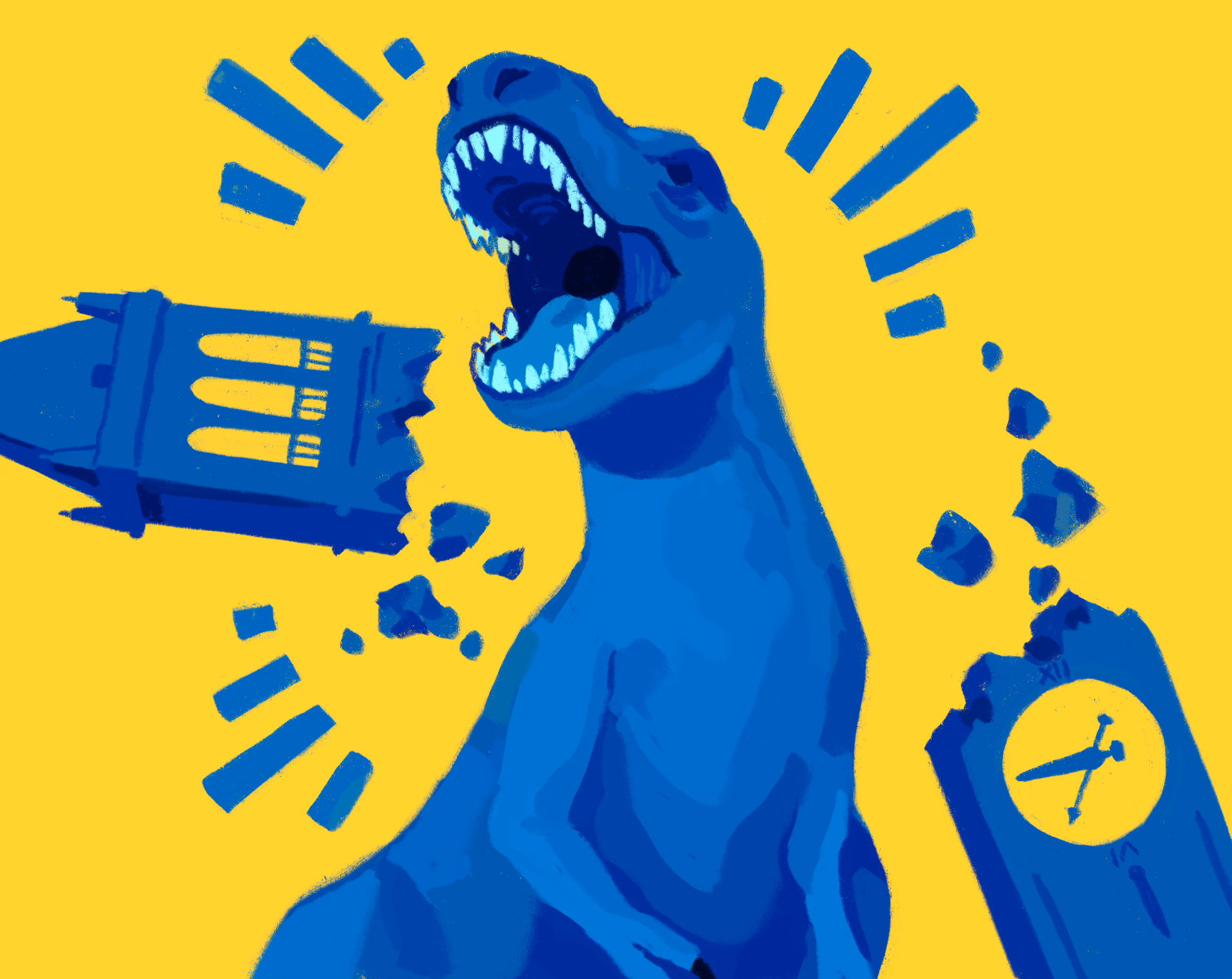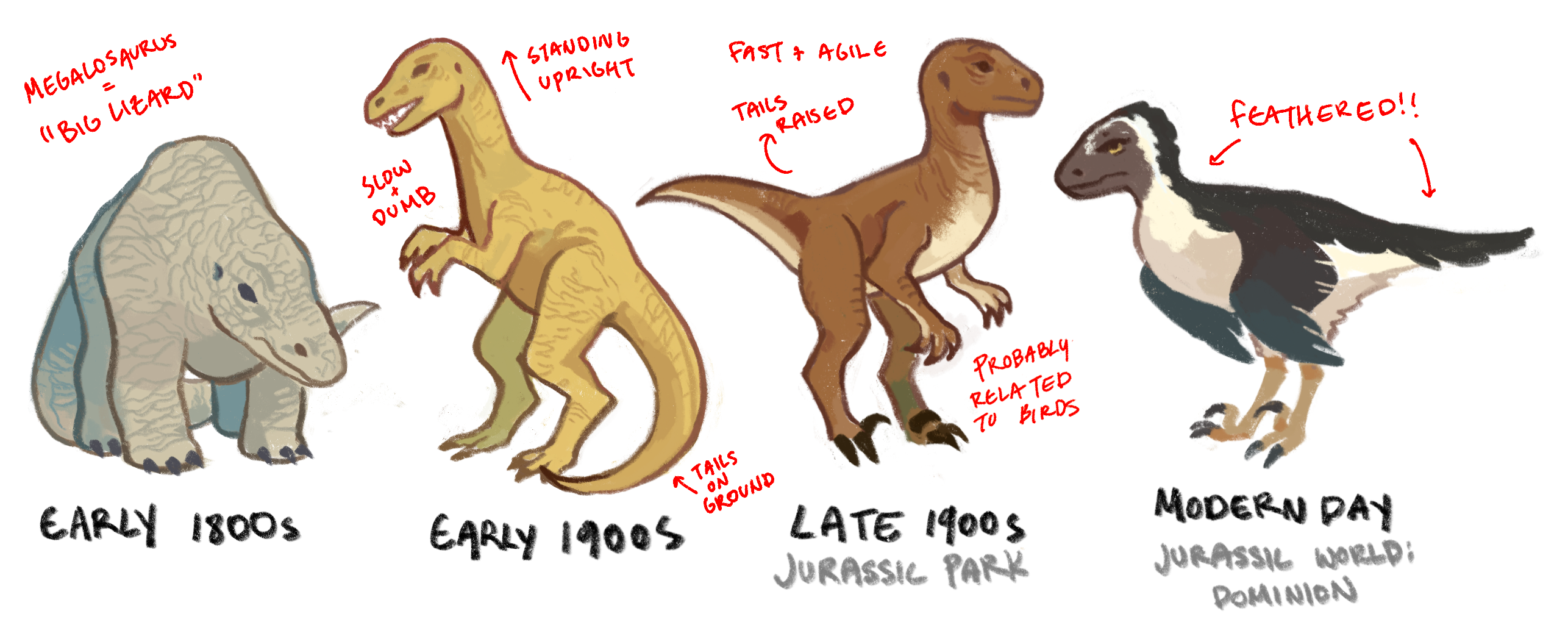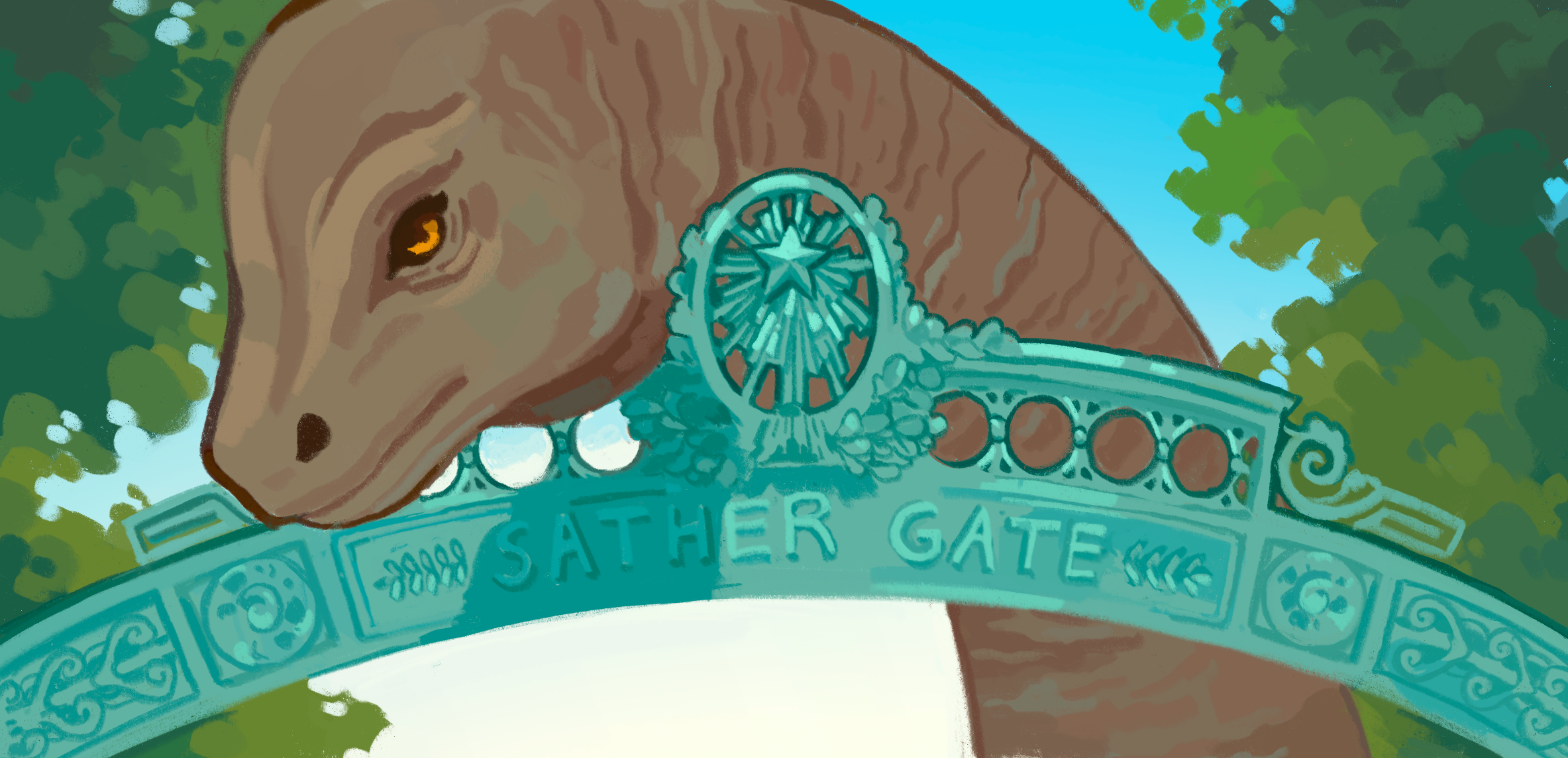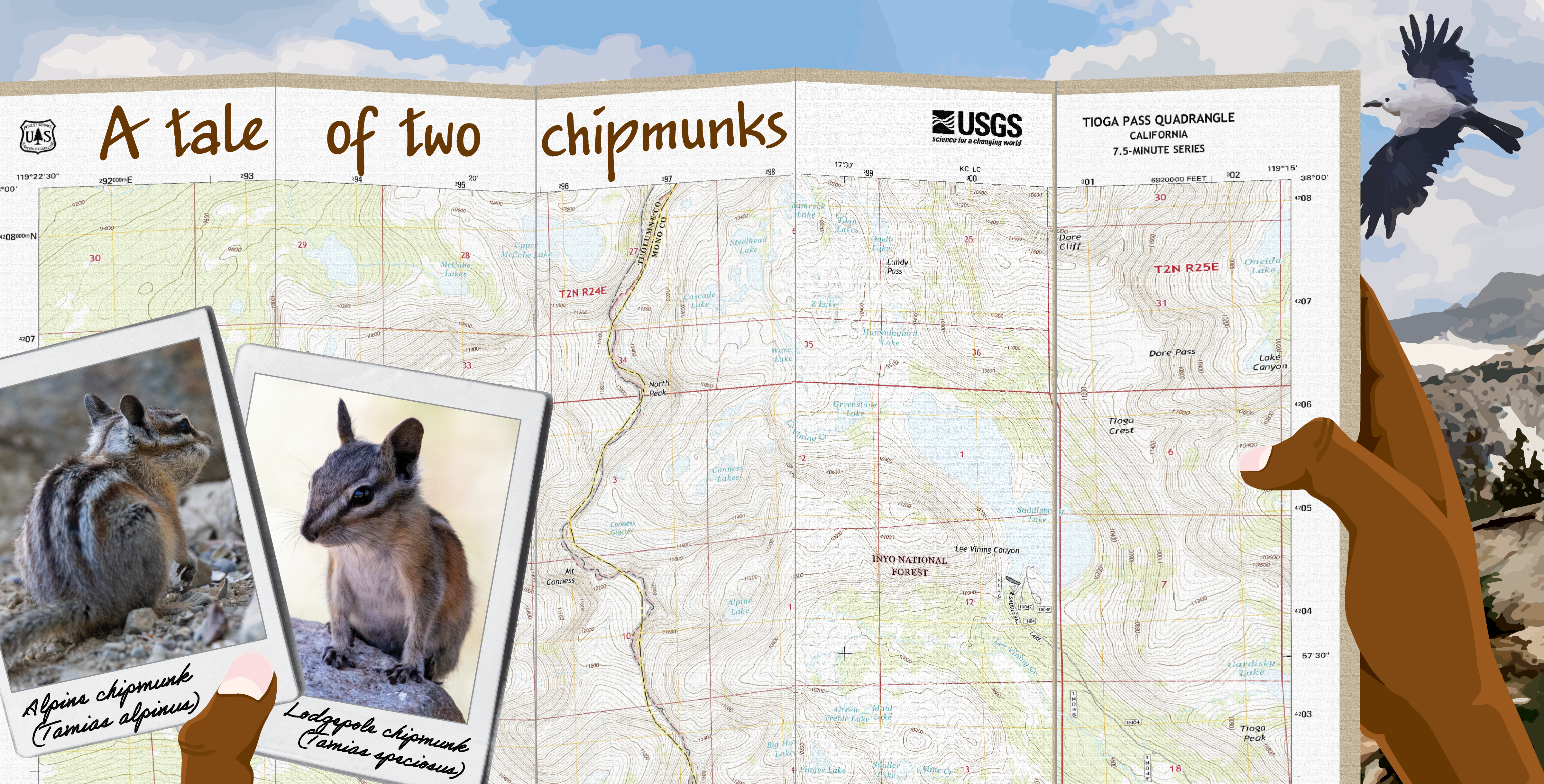What PopSci Got Right: Jurassic World, Dominion

When Jurassic World: Dominion was released last year, it was met with a cold response from critics, receiving a 29% on Rotten Tomatoes. Yet, the continuation of this classic franchise was welcomed with popular enthusiasm. The film has grossed close to $1 billion, making it the #2 blockbuster of 2022. Given its cultural relevance, how does the most recent entry in the Jurassic Park franchise fare in terms of scientific accuracy? This may seem like a silly question to ask of popular entertainment – like writing about astrophysical inaccuracies in the plot of Star Wars (looking at you, Neil DeGrasse Tyson). But Jurassic Park and its sequels have had an outsized impact on public perception of dinosaurs and paleontology. In fact, the series has played a notable role in updating the public’s image of dinosaurs to better match modern scientific understanding.
Dinosaurs have been historically depicted in popular culture as slow, plodding relics of a primitive past. Countering this representation. Jurassic Park was among the first to depict them as intelligent, active animals capable of inspiring both terror and wonder. This view was inspired by the scientific “dinosaur renaissance” that had begun 30 years prior to the release of the original Jurassic Park in 1993. The film’s scientifically informed depictions, and the pioneering use of computer-generated imagery that made them possible, lent its starring creatures a feeling of authenticity that contributed to massive success with the public and critics. Of course, as with any piece of science fiction entertainment, Jurassic Park made various departures from scientific accuracy. But overall, the original film did an admirable job at recreating dinosaurs as paleontologists understood them in 1993, and in doing so changed how the world views them.
With all this in mind, I was excited when I originally heard Universal was restarting the Jurassic franchise. The two decades between the original Jurassic Park and the release of Jurassic World in 2015 had witnessed an unprecedented rate of discoveries about dinosaurs – perhaps helped in part by the many current paleontologists inspired by the original film in their youth. The franchise reboot offered a chance to once again wow popular audiences with a revised vision of dinosaurs based on the latest science and use of state-of-the-art special effects. Unfortunately, in my opinion, the first two films in the Jurassic World trilogy, Jurassic World and Fallen Kingdom, failed to make good on that opportunity. Besides the somewhat uninspired scripts and reliance on CGI over practical effects, the films didn’t bother to update dinosaurs’ appearances to reflect new discoveries. This decision was presumably made to stay faithful to fan-favorite–and market-tested–depictions from the original movies, but ultimately undermined the novelty and authenticity that made the first Jurassic Park so outstanding. Even more disappointing, the newer films chose to focus on fictional man-made “hybrid” dinosaurs, instead of leveraging paleontologists’ growing understanding of the diversity of incredible dinosaur species that once existed in nature.
Marketing for Jurassic World: Dominion, the third and final film in the Jurassic World trilogy, suggested it might be different than its predecessors. The original cast from Jurassic Park was making a return and the film was set to heavily feature practical effects. More importantly, the plot would leave behind the previous two films’ military-purposed Franken-dinos in favor of depicting dinosaurs in more naturalistic settings. Dominion is set 4 years after dinosaurs escaped into the wild at the end of Fallen Kingdom, by which time they have spread across the planet and rapidly reproduced beyond human control. Suspending disbelief about this global ecological takeover in such a short time span, witnessing animals from over 66 million years ago interacting with the 21st century world seemed like a fun premise to me. So now that Dominion has released, does it do more than its predecessors to incorporate modern evidence for how dinosaurs looked and behaved? Does the movie recapture some of Jurassic Park’s magical blend of real science, imagination, and edge-of-your-seat thrills? The answer to these questions is…kind of. I watched the film with rather low expectations, and came away feeling like they were met, but not surpassed. Dominion’s plot comes off as unfocused and somewhat bloated, with the dinosaurs often feeling more like set pieces or interchangeable obstacles for the protagonists to run and hide from rather than the main attractions. Despite the movie’s premise ostensibly being about dinosaurs, and there being more of them on-screen than ever, the central narrative is strangely more concerned with human cloning and genetically modified crop-destroying insects. Still, I was generally entertained and felt like the movie at least gave a few nods towards real science – more than the previous two Jurassic Worlds, anyway. So, what does Dominion get right and wrong from a scientific point of view? (Warning for those who have not yet seen the film: spoilers ahead!)
Dino DNA: Amber and ancient genetic material
The clever premise underlying the Jurassic films is that scientists can recover dinosaur DNA from blood preserved in amber-encased mosquitos. Amber is a hard, translucent substance formed from fossilized tree resin. Amber can indeed contain perfectly intact remains of insects and other small animals that were trapped in sticky sap millions of years ago. In fact, lizards and tiny dinosaur limbs have even been found in these encasings. Unfortunately, even in an ideal preservation scenario like amber, DNA as a molecule is not stable enough to retain information after more than roughly 1.5 million years. Scientists have sequenced genomes of prehistoric animals, but only in relatively recently extinct species like wooly mammoths (so yes, mammoths could theoretically be resurrected). And even if we imagine that amber could preserve genetic material for tens of millions of years, it’s still hard to believe that Jurassic Park and Jurassic World would have such a diversity of iconic dinosaurs from around the world. Amber with fossil inclusions is very rare, and dino-age amber has been found in only a few places around the world. It seems incredibly improbable that anyone would be able to find so many globally distributed deposits of preserved amber with insects containing the blood of well-known dinosaurs. It’s even harder to imagine how the engineers at Ingen and Biosyn were able to get DNA from marine animals like mosasaurs, since while there are plenty of blood-sucking parasites in the oceans today and probably in prehistory, there isn’t an underwater equivalent of tree resin to preserve them! Side note: the UC Museum of Paleontology (UCMP) on campus has one of the country’s largest collections of amber. Much of it is from Chiapas, Mexico, and is younger than the Age of Dinosaurs.
Genetic technologies (oh my!)
In addition to paleontology, the Jurassic films have always featured methods in genetics and cloning. Dominion doubles down on this, as its primary plot concerns Maisie Lockwood, a human clone whose genes hold the key to stopping a plague of genetically engineered locusts. In real life, human cloning – transplanting the DNA of an existing individual into the egg cell of another to make a person genetically identical to the first – has not yet occurred, due to both ethical and practical biological issues. In addition to creating Maisie using cloning, Dr. Charlotte Lockwood discovers a way to cure her of a fatal genetic disorder. This fictional gene therapy technique sounds a lot like real-life CRISPR, the Nobel prize-winning gene-editing technology based on a discovery by Dr. Jennifer Doudna at UC Berkeley. CRISPR allows scientists to remove and replace genes from a cell’s DNA and replace them with different versions of genes. CRISPR does have great potential for gene therapy, but unlike the movie’s technology, cannot be easily applied to simultaneously edit the DNA of every cell in an individual’s body. Moreover, editing human embryos with the technique has thus far been considered unsafe and ethically questionable (a scientist who did so was sentenced to prison in 2019). Charlotte Lockwood is said to have used a virus to edit Maisie’s genome, which is plausible—many real viruses alter their hosts’ DNA, and CRISPR itself comes from a method bacteria use to remove virally-inserted DNA from their genome.
The parallels between the movie’s artificial virus and real-life CRISPR extend to their potential as ecological engineering technologies. Dominion ends with an engineered virus like the one that cured Maisie being used to spread through populations of giant locusts and sterilize or otherwise control them genetically. This resembles the real-world concept of a gene drive, in which artificial genetic alterations, usually induced with CRISPR, that have a higher-than-natural probability of spreading to offspring are introduced into a population. Gene drives have been studied with the idea of using them to control populations of pathogen-carrying insects and invasive species. However, many scientists worry about the unintended effects of releasing these engineered genes into nature—a concern that fits well with the themes of the Jurassic series.
Visual portrayal of dinosaurs
Perhaps the most visible change in the scientific image of dinosaurs over the last 30 years is how many species we now know had feathers. While the idea of dinosaurs being related to birds has been accepted for longer (and is mentioned in the original Jurassic Park), many details of this incredible evolutionary narrative have come to light in the past couple of decades thanks to sites that have produced spectacularly preserved feathered dinosaurs, most notably in the Liaoning Province of China (but also elsewhere in China, Mongolia, Germany, Italy, Russia, Brazil, and the US). Additionally, advances in the use of computers to reconstruct evolutionary relationships from anatomical evidence and even collect new types of anatomical data (e.g., 3D scanning) have helped paleontologists place fossil discoveries into the context of evolutionary history like pieces of a very complex, incomplete jigsaw puzzle. These developments show us that feathers evolved long before flight, starting with simple down-like fuzz and eventually leading to complex branched feathers in birds and closely related dinosaurs. We tend to think of feathers as an adaptation specifically for flight, but it seems that the basic structure originally evolved for other purposes—likely insulation and display—and was only later modified for generating aerodynamic lift in a subset of bird-like dinosaurs. In an evolutionary sense, we now know that birds are surviving dinosaurs (so when I use the word “dinosaur” in this article, I really mean non-avian dinosaur). All this means that the raptors and ostrich-like Gallimimus of the original Jurassic Park should have been feathered, and possibly others such as T. rex. Even some herbivorous dinosaurs had filamentous or quill-like skin coverings. Despite this now established knowledge, Dominion doesn’t change the appearance of its Velociraptor – and in fact introduces a new inaccurately unfeathered raptor genus, Atrociraptor. To its credit, the film does feature feathered non-avian dinosaurs for the first time in the series. Pyroraptor, Therizinosaurus, Oviraptor, and the small tyrannosaur Moros are all shown with varying degrees of feather coats, and the extended edition’s prologue even depicts a T. rex with dino-fuzz. The movie explains away the lack of feathers in other species as a byproduct of filling in gaps in their genomes. While I appreciate that the script writers bothered to create an explanation at all, I of course would have preferred if they included beautiful plumage on their Velociraptor!
Lastly, one of my complaints about the first two Jurassic World movies was that they missed the opportunity to showcase many new prehistoric creatures distinct from those in the original trilogy – with a few exceptions, like the marine lizard Mosasaurus. Dominion goes a long way towards rectifying this failure, The film includes lesser-known but visually striking dinosaurs like the scythe-clawed plant eater Therizinosaurus, the parrot-beaked and crested Oviraptor, and the enormous titanosaur Dreadnoughtus. It also features some excellent non-dinosaurian animals like Quetzalcoatlus, a flying pterosaur with a wingspan equivalent to a Cessna, as well as two distant relatives of mammals from before the dinosaur era. In total, I counted 32 unique extinct species in the movie, an impressive number that hopefully goes some way towards introducing the public to the incredible diversity of these beautiful creatures—a diversity that will continue to increase as paleontologists discover more undescribed species.
Scientific understanding of how dinosaurs looked and behaved has markedly changed since they were first described in the 19th century. The original Jurassic Park brought to life an updated view of dinosaurs for the public in the 1990’s, but discoveries since then have further altered paleontological reconstructions. 2022’s Jurassic World: Dominion incorporates more recent science by depicting feathers on some of its dinosaurs.
 Scientific understanding of how dinosaurs looked and behaved has markedly changed since they were first described in the 19th century. The original Jurassic Park brought to life an updated view of dinosaurs for the public in the 1990’s, but discoveries since then have further altered paleontological reconstructions. 2022’s Jurassic World: Dominion incorporates more recent science by depicting feathers on some of its dinosaurs.
Scientific understanding of how dinosaurs looked and behaved has markedly changed since they were first described in the 19th century. The original Jurassic Park brought to life an updated view of dinosaurs for the public in the 1990’s, but discoveries since then have further altered paleontological reconstructions. 2022’s Jurassic World: Dominion incorporates more recent science by depicting feathers on some of its dinosaurs.
What do we know about how extinct animals behaved?
Giving into the Hollywood spectacle, Dominion sometimes leans into the cliché representation of dinosaurs as monsters, whose main goal appears to be thrilling the audience. Certainly, it makes sense that medium-to-large predatory dinosaurs could see humans as prey. But in real life, most modern predators tend towards caution when they encounter an unfamiliar species, and even the most ravenous carnivores have plenty of interesting behaviors outside of hunting. In contrast, the film has several predators whose screentime exclusively involves attacking people and vocalizing aggressively – usually at the same time. Probably the most absurd display of wanton animal violence comes from the movie’s pterosaurs – the flying reptiles popularly referred to as “pterodactyls.” While these creatures are often mistaken for dinosaurs and are in fact close relatives, they form their own group of reptiles that evolved flight independently from (and before) birds. Biosyn, the biotech corporation that serves as the film’s main villain, uses an electromagnetic field to control flying animals in their reserve. When this is switched off in one scene, a plane carrying the protagonists is almost instantly assaulted by an enormous pterosaur, Quetzalcoatlus. Quetzalcoatlus may have been territorial in life, but its speed, aggressiveness, and size are exaggerated to the max here. I find it especially hard to believe that such a lightly built animal could rapidly destroy the engines and metal hull of an aircraft with no apparent difficulty or harm to itself.
While many of the Jurassic franchise’s dinosaurs are characterized by their aggression, the ever-anticipated showdowns with the classic T. rex are typically the pinnacle of spectacle violence. Starting with Jurassic Park III, the Jurassic movies4 appear to have established that the new scary villain must inevitably prove itself by fighting the iconic Tyrannosaurus, the old guard of the franchise. While many dinosaur fans love these scenarios and enjoy debating which dinosaur would win in a fight, I’d argue that this kind of artificial rivalry misses the most interesting things about dinosaurs. Instead of ranking dinosaurs for their size or supposed strength in combat, why don’t we appreciate each species for its multifaceted adaptations to obtain food and survive in a competitive environment? Serving as a centerpiece to Dominion, as expected, we witness a showdown between Tyrannosaurus and newcomer Giganotosaurus. Since T. Rex and Giganotosaurus lived 30 million years apart on separate continents, the question of who would win has no basis in reality. That said, I will risk some hypocrisy by taking a bit of a side in the debate – I take issue with Giganotosaurus being shown as clearly stronger than T. rex in their encounters. Giganotosaurus was probably a bit longer from head to tail, but it was built far less robustly than T. rex and was presumably less massive and powerful in life. But again, both were remarkable species, and who would win in a fight is one of the least interesting things we can ask about them.
To acknowledging areas it makes progress, Dominion dives slightly deeper into conveying the richness of dinosaur behavior. Like its predecessors, Dominion shows herbivorous dinosaurs forming herds, which is supported for certain species with evidence like bone beds and mass nesting grounds. We also get to see a couple species of dinosaurs thriving in the snowy Sierra Nevada mountains of California. While the planet was much warmer in the Mesozoic Era and there were no permanent ice caps at the poles, not all dinosaurs lived in steamy jungles or swamps like is often imagined. Dinosaur fossils have been discovered in high-latitude regions like Alaska that would still have been rather cold back in the Cretaceous, and like the Sierras today probably saw seasonal snowfall. The late UC Berkeley professor, Bill Clemens, a legendary paleontologist and fossil mammal expert, was a key figure in uncovering the polar ecosystem of Cretaceous Alaska. One scene in this wintry setting shows a mother Velociraptor training her offspring to hunt, which is completely speculative but possible. Not many animals are known to actively teach skills to other individuals, but there are a few examples outside of primates such as meerkats, dolphins, and (relevantly for dinosaurs) a couple species of birds. An inter-species interaction I particularly liked in the film was the initial encounter between two apex predators, T. rex and the Giganotosaurus. These massive carnivores confront each other over a deer carcass, then after a brief scuffle the T. rex retreats. The vast majority of territorial battles in real life end with the loser backing away, often without physical violence. Real animals avoid risking serious injury to themselves if they can help it, and I appreciate that this scene treated the dinosaurs like animals rather than movie monsters. Finally, I enjoyed that the movie showed an herbivore, Therizinosaurus, as territorial and dangerous. It may have gone a bit over the top when it swatted a deer like a pesky fly, but it is true and underappreciated that large herbivores are often more aggressive than carnivores. Consider that bison, not bears or wolves, cause the most injuries in Yellowstone National Park, and that hippopotamuses, not lions or crocodiles, are by far the most dangerous large African animals (elephants are #2). Overall, while Dominion often fell back on the trope of treating its dinosaurs as mindless killing machines, I was pleased by a number of scenes scattered throughout the film with more nuanced portrayals of dinosaur behavior.
Now Let’s Talk About Giant Insects
A central part of Dominion’s plot revolves around gigantic grasshoppers engineered by Biosyn that pose an existential threat to global agriculture. Paleobotanist Ellie Sattler says that the transgenic insects have “genes that have been extinct since the Cretaceous.” This is somewhat of a confusing statement from a scientific standpoint. But if I’m being generous in interpreting it, I would say that the geneticists at Biosyn swapped some of the grasshoppers’ genes with the variants, or alleles, present in a species that lived in the Cretaceous Period. Now, the Cretaceous is a strange choice since insects from then weren’t particularly large. However, there was a period in Earth’s history filled with giant insects that the filmmakers could have used. Hundreds of millions of years prior to the Cretaceous, the Carboniferous Period – named for abundant coal deposits formed from the widespread forested swamps that existed then – was home to enormous terrestrial arthropods such as hawk-sized dragonflies and millipedes longer than most people are tall. The film could have taken inspiration from actual living creatures! Ultimately, though, the locust plot feels out of place, especially given the many more direct ways the film could have addressed the consequences of genetic engineering and climate change.

Final thoughts
In the end, while Dominion may not be the greatest work of film in the past couple years, I did enjoy watching its dinosaurs roam on screen for a couple of hours. The movie does a commendable job of showing off more up-to-date paleontology than the previous few Jurassic films, but unfortunately in many cases continues to rely on inaccurate “movie monster” style portrayals.. Hopefully, at least some viewers will be inspired to learn more about how these incredible animals really looked and behaved. Especially for younger audiences, dinosaurs can be an amazing gateway to an interest in science and the natural world. If you are looking for more scientifically rooted depictions of dinosaurs and the world they inhabited, I recommend BBC’s recent Prehistoric Planet series (season 2 is now airing on Apple TV), as well as the documentary Dinosaur Apocalypse (free on PBS). The (non-avian) dinosaurs may be gone from the Earth, but they still strike wonder in both scientists and the general public as monuments to the potential of evolution and extinction. I’d like to think that they will continue to inspire scientific discoveries and artistic imaginations for a long time to come.
Notice something wrong?
Please report it here.




